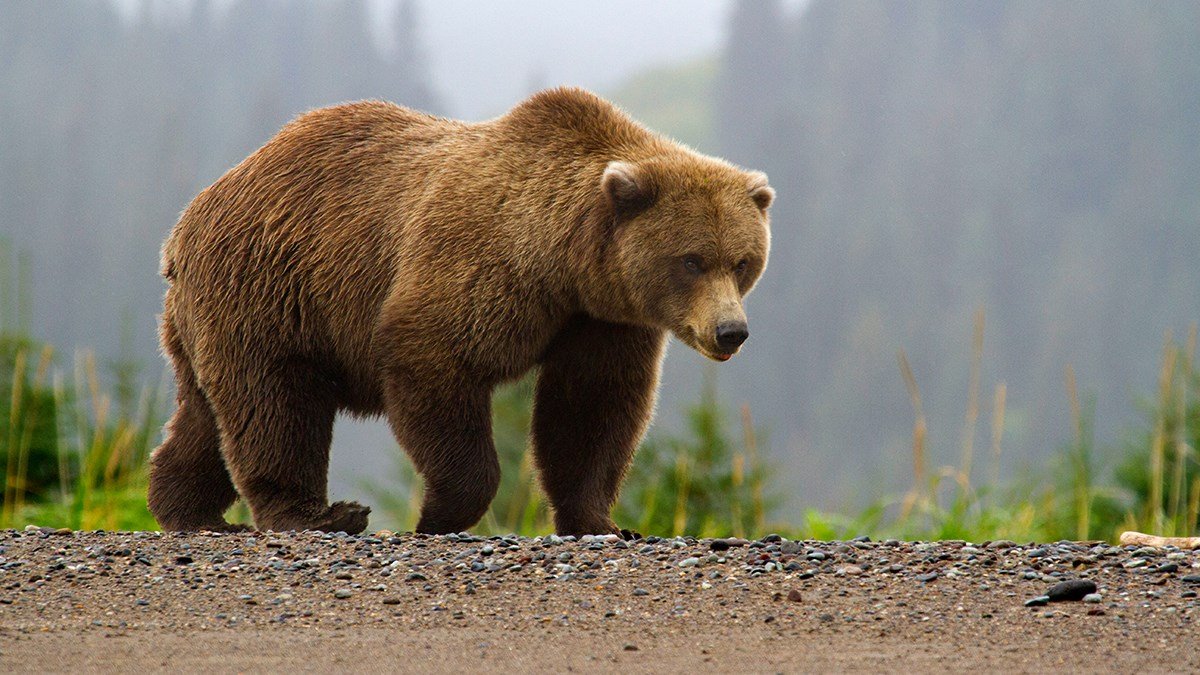Make an
impact today
Support our mission of tangible impact by investing in the CCRE Fund.

Grizzly Bear (Ursus arctos horribilis)
Predator, Mammal, Endangered, Protected (federal)
The Jäger Company and the CCRE Fund’s initiatives offer profound benefits for the conservation and management of the grizzly bear (Ursus arctos horribilis) in the Intermountain West region of the United States. As a keystone species, the grizzly bear plays a vital ecological role by shaping its environment and influencing species diversity. Grizzly bears help regulate prey populations, such as elk and deer, and facilitate seed dispersal for numerous plant species through their foraging behavior. By supporting grizzly bear conservation, The Jäger Company and the CCRE Fund contribute to preserving the integrity and balance of entire ecosystems in the region.
One of the core pillars of the CCRE Fund—land acquisition and agricultural conservation easements—directly benefits grizzly bear populations by safeguarding critical habitats. Habitat loss due to human encroachment is one of the primary threats to grizzly bears, and the Fund’s focus on securing and preserving large, connected landscapes mitigates this risk. By expanding protected areas and establishing wildlife corridors, the CCRE Fund ensures that grizzly bears have access to the wide-ranging territories they need for survival. This is particularly important for facilitating gene flow between fragmented populations, enhancing genetic diversity, and ensuring the long-term viability of grizzly bear populations.
Moreover, the CCRE Fund’s emphasis on regenerative agriculture and sustainable land management reduces the likelihood of human-wildlife conflicts, which are a significant challenge for grizzly bear conservation. Regenerative practices, such as rotational grazing and restoration of native vegetation, help maintain healthy ecosystems that support prey species and other food sources for grizzly bears. These practices can also reduce the temptation for bears to seek out human food sources, thus lowering the incidence of bear-livestock interactions and minimizing the need for lethal management interventions. In this way, the CCRE Fund fosters a more harmonious coexistence between grizzly bears and agricultural communities.
From an investment perspective, the CCRE Fund’s approach offers a compelling case for environmental impact investing. Nature-based carbon sequestration projects, which form a central part of the Fund’s strategy, not only address climate change but also enhance the habitats upon which grizzly bears and other species depend. The restoration of forests, wetlands, and grasslands contributes to carbon capture while simultaneously creating environments that support biodiversity. Investors who prioritize environmental sustainability can see tangible returns in both ecological and financial terms, as the Fund’s projects deliver measurable environmental benefits alongside competitive financial performance.
For environment-focused charitable donors, the CCRE Fund represents a strategic opportunity to support grizzly bear conservation within a broader framework of ecosystem restoration. Donors can trust that their contributions will not only protect an iconic species but also promote the health and resilience of entire ecosystems. By focusing on land conservation, sustainable agriculture, and renewable energy, the Fund aligns with philanthropic goals centered on biodiversity conservation, climate action, and community development. Contributions to the CCRE Fund help address the root causes of biodiversity loss and habitat degradation, ensuring that conservation efforts for species like the grizzly bear are both comprehensive and sustainable.
Civic leaders also stand to benefit from supporting the CCRE Fund, as it offers a model for balancing wildlife conservation with regional economic growth. Grizzly bears are a significant draw for ecotourism, attracting visitors interested in wildlife viewing and outdoor recreation. Communities that embrace conservation efforts often experience economic boosts through tourism, as well as enhanced environmental quality that benefits residents. Furthermore, by reducing human-wildlife conflicts through sustainable land management, the CCRE Fund supports the development of policies that align conservation with local economic interests, ensuring that rural communities and wildlife can coexist more successfully.
In summary, the Jäger Company and the CCRE Fund’s impact on grizzly bear conservation in the Intermountain West is multifaceted, offering ecological, economic, and social benefits. By focusing on land preservation, sustainable agriculture, and climate mitigation, these initiatives protect vital habitats, reduce conflicts between bears and humans, and promote the long-term survival of this keystone species. For investors, donors, and civic leaders who care about protecting the environment and ensuring a future where both wildlife and communities thrive, the CCRE Fund represents a transformative opportunity to make a meaningful impact.
Make an Investment.
Investing in the CCRE Fund offers a unique opportunity to protect critical ecosystems while generating financial returns. By supporting land conservation, regenerative agriculture, and nature-based carbon projects, you directly contribute to preserving wildlife habitats and fostering biodiversity, including the protection of apex predators like the mountain lion. The fund’s holistic approach balances ecological restoration with sustainable economic practices, ensuring long-term environmental stewardship. Your investment drives impactful change by aligning capital with initiatives that mitigate climate change, conserve natural resources, and promote rural sustainability. If you care about protecting the environment and want your investment to create lasting ecological and social value, the CCRE Fund is the ideal vehicle for your commitment.
